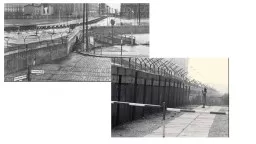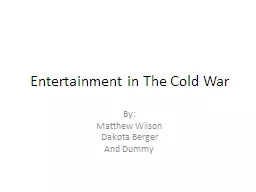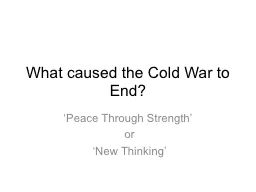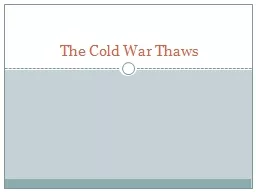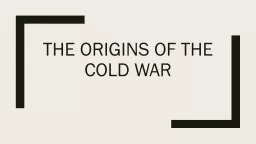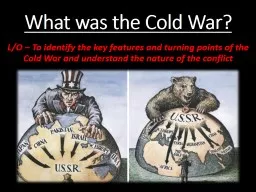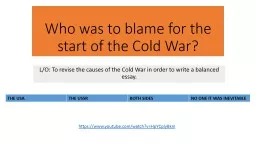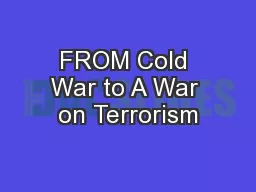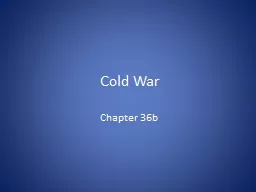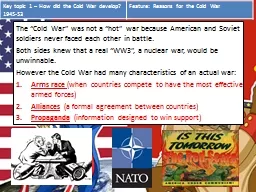PPT-The Cold War Era
Author : lois-ondreau | Published Date : 2018-01-07
This time period is marked by fearparanoia Nuclear weapons are supposed to be a deterrence but instead increase tension between the countries Soviet Union and United
Presentation Embed Code
Download Presentation
Download Presentation The PPT/PDF document "The Cold War Era" is the property of its rightful owner. Permission is granted to download and print the materials on this website for personal, non-commercial use only, and to display it on your personal computer provided you do not modify the materials and that you retain all copyright notices contained in the materials. By downloading content from our website, you accept the terms of this agreement.
The Cold War Era: Transcript
Download Rules Of Document
"The Cold War Era"The content belongs to its owner. You may download and print it for personal use, without modification, and keep all copyright notices. By downloading, you agree to these terms.
Related Documents

